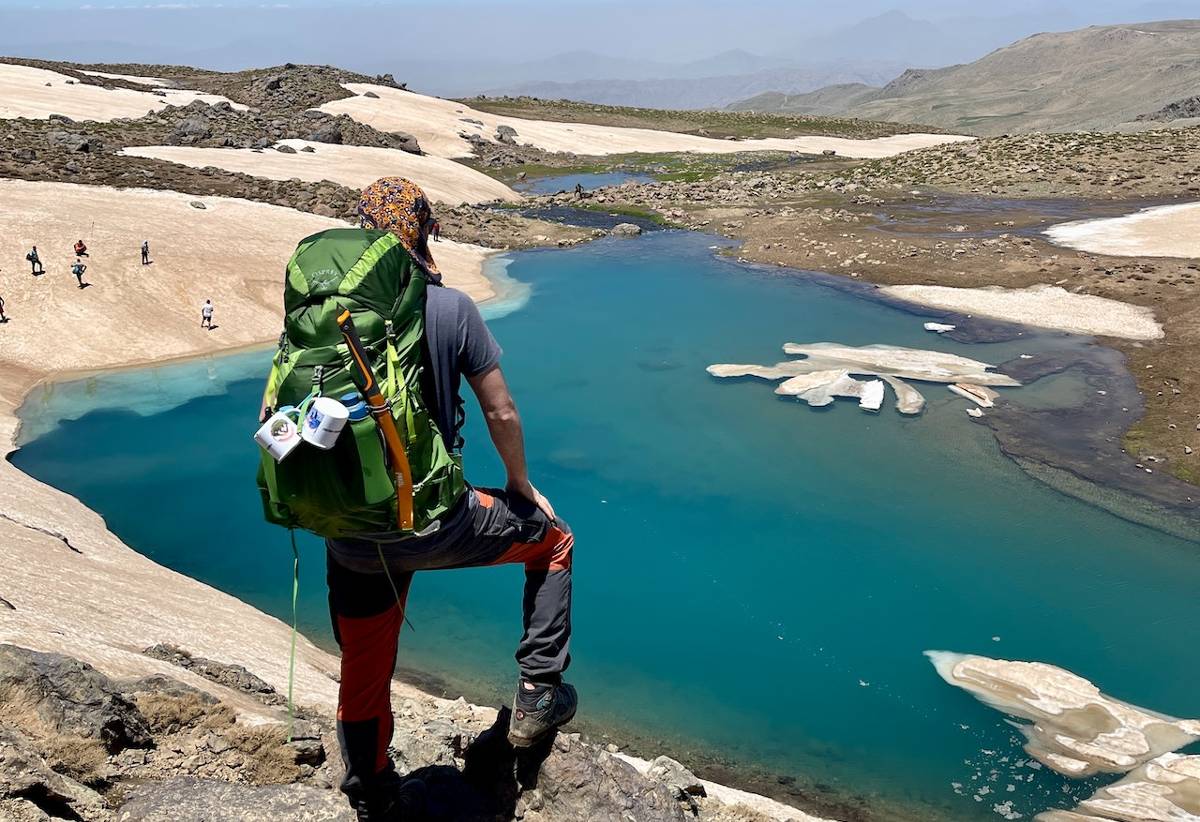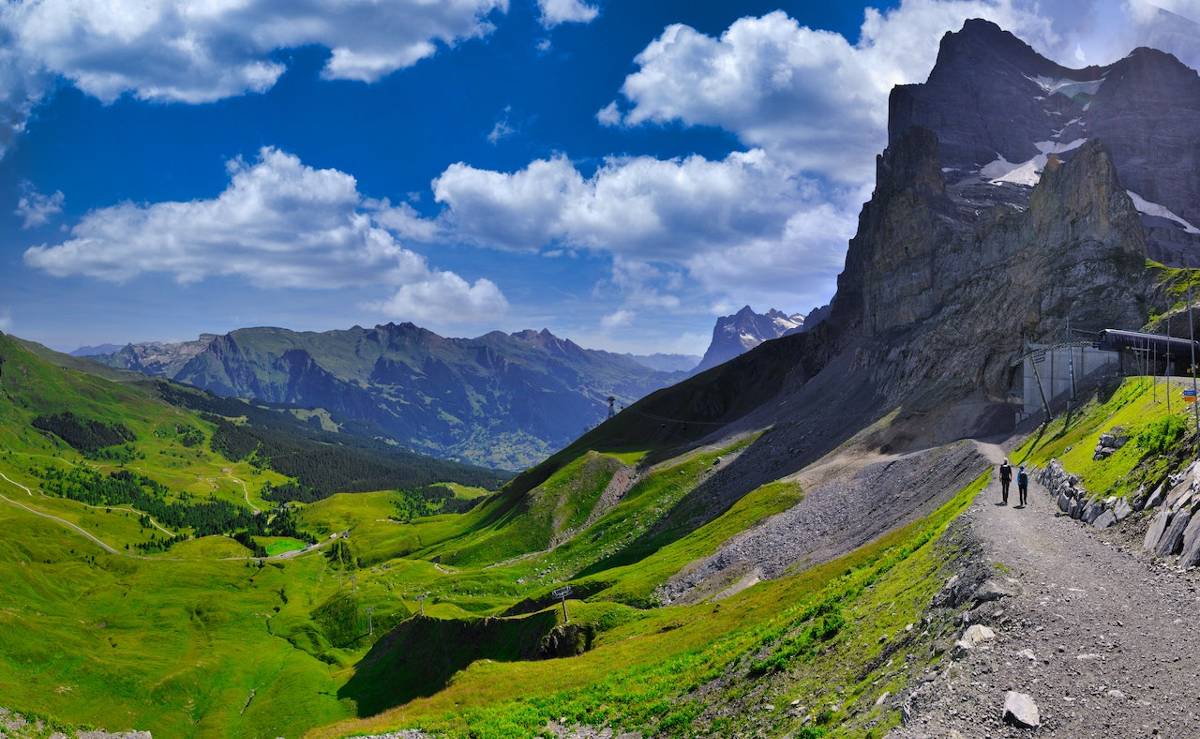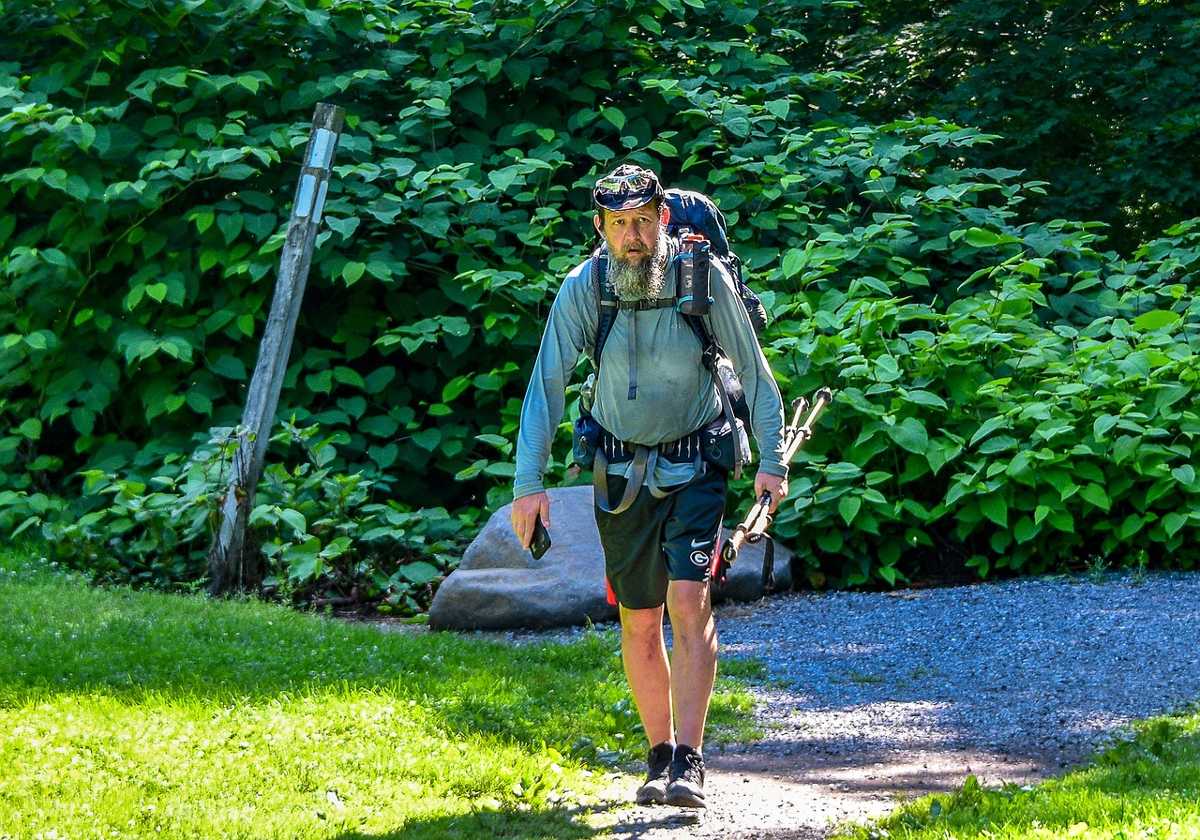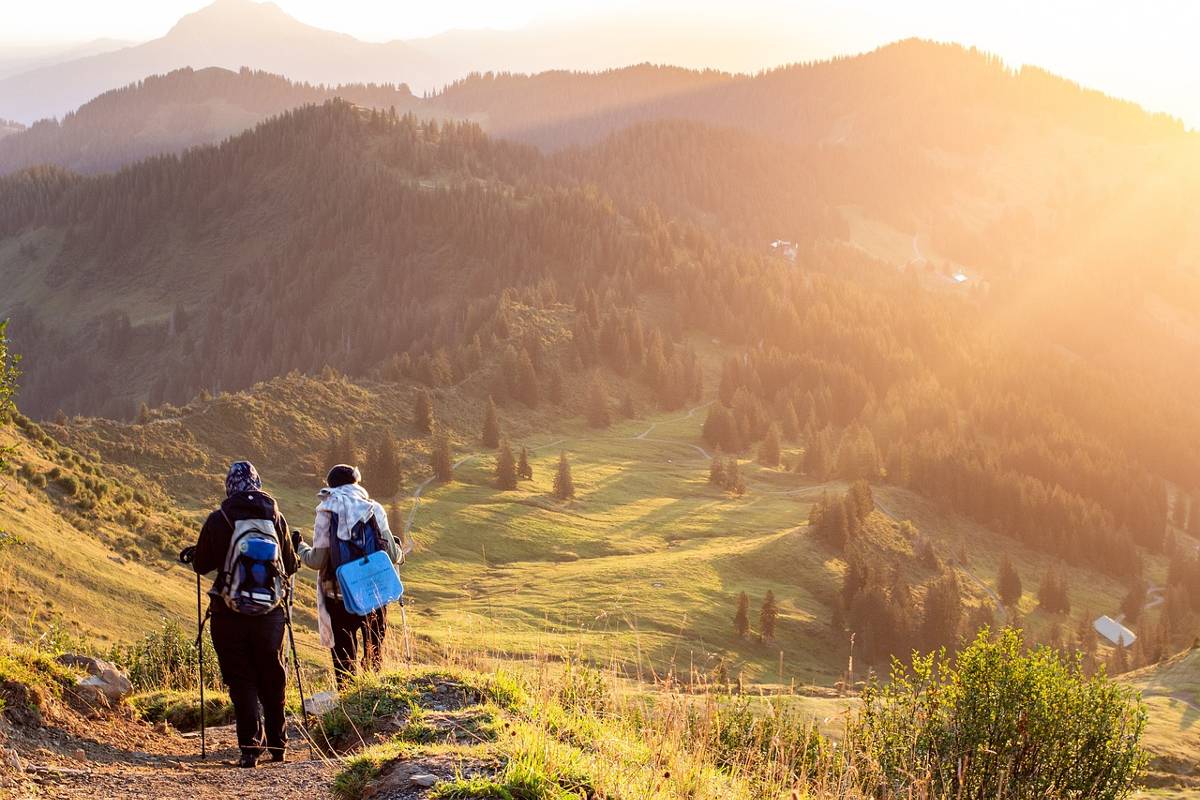Have you ever considered taking a long-distance hike? If so, then thru hiking might be the adventure for you!
Thru hiking is an extraordinary way to experience nature and challenge yourself. It requires dedication, strength, and resilience – but it’s absolutely worth it in the end!
In this article, we’ll explore what thru-hiking is – from its definition and history, through to tips on how to prepare for one of these intense journeys. So let’s get started…
What Is Thru-Hiking?
Thru-hiking is an awe-inspiring experience like no other. It’s a journey that takes ambitious individuals out of their comfort zone and into the wilderness, embarking on months-long treks across mountainous terrain or down scenic trails.
From traversing the Appalachian Trail to conquering the Pacific Crest Trail, thru-hikers must be prepared for endless days of exploration and adventure.
It’s not simply about putting one foot in front of the other; it’s also about meeting new people, discovering hidden gems along the way, learning how to survive off what nature provides and developing an appreciation for our planet.
Thru-hiking requires immense physical, mental and emotional strength – but those who accept this challenge are rewarded with unforgettable memories and life lessons they can carry forever.
The benefits of going on such a daring quest far outweigh any risks involved. Not only does it open up new opportunities for personal growth, it’s also a chance to slow down from everyday hustle and bustle while reconnecting with yourself as well as nature.
Setting aside time for self reflection and contemplation gives hikers valuable insight into where they’re at in life – making them better equipped to tackle future obstacles once they return home again.
With all these incredible advantages, there’s no wonder why so many adventurers choose to go #thruhiking!
The Benefits Of Thru-Hiking
Thru-hiking is an incredible way to explore the natural world and push yourself to your limits. It’s a long distance, uninterrupted hiking trip on foot through some of the most amazing landscapes in the world – from oceanfront trails to towering mountain peaks and everything in between. There are many benefits that come with thru-hiking, including physical exercise, mental clarity, spiritual growth and connection with nature.
Physically, thru-hikers will experience increased strength, flexibility and endurance as they traverse difficult terrain over miles of trail. By pushing themselves each day hikers can build muscle mass and improve cardiovascular health while enjoying spectacular views along the way.
Mentally, thru-hiking allows for time away from technology and distractions of everyday life which helps clear one’s mind and develop self-control while living simply off the land. The solitude provides opportunities for introspection and inner exploration leading to personal transformation.
Spiritually, thru-hiking gives one a chance to reconnect with nature by immersing oneself into its beauty; breathing fresh air deep into their lungs; listening intently to birdsong against a backdrop of babbling brooks or crashing waves; finding solace under starry night skies. This mindful exploration allows for deeper appreciation of our planet’s fragility whilst developing respect for its balance.
The rewards that come with spending days trekking across wild lands offers something unique not found in other activities – it is an opportunity to truly connect with yourself in ways never before imagined. Thru-hiking tests one’s mettle physically, mentally & spiritually presenting a challenge unlike any other but offering boundless returns if you have what it takes! Transitioning now into preparing for such an endeavor…
Preparing For A Thru-Hike


Thru-hiking is a dream for many and an accomplishment for the few. It requires intense preparation, both mentally and physically, and prior research to ensure success on the trail. To properly prepare for a thru-hike, here are three lists that address physical health, mental wellbeing, and gear and supplies:
Physical Health:
• Get in shape – start exercising regularly at least 6 months before your hike. This will help you build endurance and reduce injury risk while out on the trail.
• Eat right – focus on eating nutritious foods such as lean proteins, complex carbs, fruits & veggies. Avoid processed snacks or junk food as much as possible to maintain energy levels throughout the day.
• Stay hydrated – carry plenty of water with you when hiking long distances so you can stay hydrated even during strenuous activity.
Mental Wellbeing:
• Visualize success – visualize yourself completing the entire journey from beginning to end before embarking on your thru-hike; this helps keep motivation high even when times get tough.
• Set realistic goals – set small achievable milestones along your route so it feels like progress is being made every step of the way.
• Make friends – making connections with other hikers along the way can be extremely rewarding and provide emotional support when needed most.
Gear & Supplies:
• Pack light – make sure all items packed are necessary for survival or comfort while traveling; anything else should be left behind to save weight (and money).
• Research gear options – do some research into what type of gear works best depending on terrain/climate conditions expected during your trip so you’re not surprised by any unexpected weather changes.
• Bring emergency supplies – always have a first aid kit handy plus extra layers of clothing just in case temperatures drop unexpectedly while out on the trail.
Knowing how to adequately prepare for a thru-hike is essential if one wants to complete their journey safely and successfully without too much stress or hassle along the way.
With proper knowledge of physical health needs, mental wellbeing strategies, and suitable gear & supplies selection, hikers can feel confident tackling whatever challenges arise ahead of them!
Daunting though it may seem initially, preparing for a thru-hike doesn’t need to take away from its joys—it simply adds another layer of excitement as we look forward to our next adventure!
More Gear and Supplies for Thru-Hikers
Packing for a thru-hike is like completing an intricate jigsaw puzzle – it requires careful consideration and planning. Every item you take with you on your journey must be carefully weighed against the benefits of carrying it versus its weight.
Thru-hiking is not only about getting from one point to another, but also enjoying the journey along the way. Therefore, having lightweight yet quality gear and supplies can make all the difference in making sure that your hike remains as enjoyable as possible.
When it comes to outfitting for a multi-day excursion, there are several essential items every hiker needs to bring along: shelter, sleeping bag or hammock, stove, cooking utensils, food rations and water bottles/purification devices.
Additionally, hikers should consider bringing a backpacking pack of sufficient capacity to carry their equipment such as:
- clothing suitable for different weather conditions
- first aid kits
- insect repellent
- maps/GPS units
- trekking poles
- headlamps and spare batteries
- emergency communication device
- fire starter kit
- repair kit (for tent/shelter)
- sunscreen and sunglasses
It’s important to remember that while packing light is key when it comes to long distance hikes, don’t skimp on safety and comfort items if they’re needed.
Prioritize what’s most important for your own specific trip – from navigational tools such as compasses or GPS systems to camping luxuries like chairs or blankets – then look for ways to cut down on other areas where necessary.
By selecting durable yet lightweight materials wherever possible and ensuring that each piece of gear has multiple uses (such as using hiking pants instead of shorts), you can save valuable space without compromising on any essentials required during your adventure. With proper preparation and some thoughtful strategy, you’ll be ready to tackle even the longest trails with confidence!
Popular Thru-Hiking Trails


To embark on a journey of this magnitude is like taking the plunge off a high dive. Thru-hiking is no small feat and requires research, planning, time, and dedication. This section will explore popular thru-hiking trails that offer unique experiences in different parts of the world.
The Appalachian Trail (AT) spans 2,180 miles from Georgia to Maine through 14 states along the East Coast of the U.S., making it one of the most well known thru-hikes in North America.
The Pacific Crest Trail (PCT) covers 2,650 miles over California, Oregon, and Washington with diverse terrain ranging from desert to alpine forests.
In Europe there’s the Camino de Santiago trail which extends 780km across Spain and offers breathtaking views as it meanders its way towards Santiago de Compostela.
Closer to home for many Canadians are La Vérendrye Wildlife Reserve Park Trails in Quebec or Bruce Trail in Ontario – both offering stunning landscapes while traversing Canada’s rugged wilderness.
No matter what you choose, each thru-hike has something special waiting around every corner – but preparing for them can be quite challenging…
Common Challenges Of Thru-Hiking
Although thru-hiking is a rewarding experience, it’s not without its challenges. According to recent surveys, over 80% of hikers report feeling some form of difficulty throughout the journey. From emotional lows to physical exhaustion, there are many obstacles which must be overcome in order for hikers to complete their trek.
One common challenge that all thru-hikers face is fatigue. When you’re out on the trail for days or weeks at a time, your body and mind can become exhausted from the constant exertion and lack of rest.
In addition, thru-hikers often have to contend with bad weather conditions such as heavy rain or snowfall which can make trudging through difficult terrain even more challenging. Lastly, dehydration and hunger due to inadequate food supplies may cause further discomfort while hiking.
Fortunately, there are several strategies that experienced hikers use to help tackle these issues:
- Staying Hydrated: Drinking plenty of water and eating snacks high in electrolytes helps keep your energy levels up and prevents dehydration.
- Eating Well: Packing nutritious foods like nuts, dried fruits, and granola bars gives you sustenance on long hikes instead relying on sugary snacks for an energy boost.
- Taking Breaks: Stopping periodically allows your muscles to rest so that you don’t become overly fatigued during extended periods of walking or climbing.
By following these tips, thru-hikers will find themselves better equipped to take on any difficulties they encounter along their journey! Next we’ll explore helpful advice for those looking to embark on a successful thru hike.
Thru-Hiking vs Backpacking
Thru-hiking is the act of hiking an entire long-distance trail in one continuous journey, while backpacking involves taking multiple trips of shorter distances over a period of time.
Generally, thru-hikers carry more gear and supplies to last the entire journey, while backpacking usually only requires enough gear and supplies for a single trip.
Thru-hiking is also a more intense and physically demanding activity than backpacking due to the longer distances and often more difficult terrain.
Thru-hikers often require more planning and research before embarking on their journey. It is important to map out the route in advance and to be prepared for any eventuality. Thru-hikers should also be aware of potential hazards and dangers, such as extreme weather and wildlife, and take appropriate safety precautions.
Thru-hiking and backpacking both require a certain level of physical fitness, strength, and endurance, as well as a willingness to take on challenges and push yourself.
However, the rewards of both activities can be immense – the sense of accomplishment, the beautiful landscapes, and the unique experiences that can be found along the way.
Tips For Thru-Hikers


With nothing but an oversized backpack and your own two feet to carry you through long stretches of wilderness – what could possibly go wrong? Well…quite a few things, actually. But never fear – if you’ve got your heart set on conquering a long distance hike, here are some top tips for success.
At the end of the day, it’s all about preparation. Research is key: get to know where you’re going before setting out; study maps and trail conditions ahead of time; plan your route in advance and be sure to take into account terrain changes (special attention should be paid when crossing high elevation passes).
You’ll also need to consider packing options carefully – bring only essential items since they will determine how far/how fast you can travel. And don’t forget that mental stamina is just as important as physical strength – make sure to rest up and keep yourself motivated while maintaining awareness of potential hazards like thunderstorms or wildlife encounters along the way.
Your journey won’t always be easy, but with proper planning and diligent effort any challenge can be conquered. Now lace up those boots and hit the trails!
Frequently Asked Questions
Here are some of the most frequently asked questions about thru hiking.
What Should I Expect While Thru-Hiking?
Thru-hiking is an exciting and rewarding journey that can take anywhere from a few months to several years. It’s the ultimate wilderness adventure, as you traverse thousands of miles along trails such as the Appalachian Trail or Pacific Crest Trail. But what should you expect while thru-hiking?
The most important thing to remember when it comes to thru-hiking is that every day will be different. You’ll experience all kinds of weather, terrain, wildlife, people, and cultures throughout your journey.
The key is to remain flexible and open-minded so that you can make the most out of each day on the trail. You may encounter difficult hikes through rugged mountain passes or beautiful meadows filled with wildflowers. Along the way you’ll develop relationships with fellow hikers and locals who live in small towns near the trails.
You’ll also need to prepare for any challenges that come up during your hike – like staying warm at night or crossing a river without getting wet! Fortunately, there are plenty of resources available online and in books that can help you plan ahead and figure out how best to tackle these challenges.
Ultimately though, don’t forget why you’re here: To enjoy yourself and everything nature has to offer! With proper preparation and a positive attitude, you are sure to have an amazing time while thru-hiking!
How Long Does A Typical Thru-Hike Take?
Thru-hiking is a long-distance hike that covers an entire trail from beginning to end in one season. It typically takes several months and requires thorough planning, preparation, and dedication to complete. The length of time required for a thru-hike can vary greatly depending on the individual’s experience level, physical ability, pace of travel, and the geographical location of the trail.
The most common thru-hikes are located in the United States and include trails such as the Appalachian Trail (AT), Pacific Crest Trail (PCT) and Continental Divide Trail (CDT). These three trails span over 5,000 miles combined. Generally speaking, it can take anywhere between four to six months to complete a thru-hike along these trails. Some hikers may be able to finish faster while others choose to slow down their travels and enjoy each moment they spend outdoors.
For those who decide to take on this challenge, there will likely be some bumps along the way—physically and mentally. However, with careful planning and realistic expectations about how much time completing a thru-hike will require, many adventurers have crossed these iconic trails off their bucket lists successfully!
How Do I Stay Safe While Thru-Hiking?
The safety of thru-hikers is an important topic. When taking on a long trail, it’s essential to be prepared for the unexpected. From being aware of your surroundings to carrying proper supplies, there are many ways you can stay safe while thru-hiking.
First off, it’s important to plan accordingly and research the trail you’ll be hiking. Knowing what type of terrain you’ll encounter as well as potential weather conditions will help ensure that you’re properly equipped with the right gear. Additionally, make sure to bring along a map or GPS device in case you need directions if something goes wrong on the trail.
It’s also recommended to carry some form of communication device such as a cell phone or two-way radio so that you can call for help in case of an emergency. Finally, don’t forget about food and water; having enough provisions can make all the difference between a successful hike and one gone awry due to dehydration or hunger.
By following these simple tips, hikers can enjoy their journey without worrying too much about their safety. With proper planning and preparation, everyone should have a pleasant experience while exploring nature through a thru-hike.
What Is The Cost Associated With A Thru-Hike?
The cost of thru-hiking will depend largely on how much gear you need to buy upfront (or rent), as well as if there are any additional fees associated with permits or camping reservations. Generally speaking, most thru-hikers can expect to spend about $3,000 to $4,500 for their entire journey.
Here are some common factors that may affect the cost of your thru-hiking trip:
- Length of hike
- Type of trail chosen
- Whether you need to hire a guide
- Purchasing new equipment and gear
- Whether you need a campsite mid-journey
- Food & perishables
Having said that, many hikes have been completed successfully at far lower costs than those mentioned above – so don’t let money be an obstacle between you and achieving your dream!
There are also ways to reduce expenses while hiking through strategies such as planning meals ahead of time, picking up groceries along the way instead of purchasing pre-packaged food items from stores and avoiding expensive restaurants whenever possible.
Additionally some trails offer free campsites where hikers can pitch tents without having to pay anything extra. All these methods combined can help cut down costs significantly over the course of your hike.
So when considering whether a thru-hike is right for you, remember that although certain expenses are unavoidable they certainly don’t have to break the bank! With smart planning and careful budgeting anyone can experience all the amazing rewards that come with doing something truly life changing like taking on a thru-hike adventure.
Is Thru Hiking Worth It?
Is thru hiking worth it or not? That’s a question that many people ask themselves before embarking on a long-distance trek across a trail or a country.
The answer depends on what you are looking for in your adventure. For some people, thru hiking is worth it because it offers them a chance to challenge themselves physically and mentally, to connect with nature and other hikers, to experience different cultures and landscapes, and to achieve a personal goal.
For others, thru hiking is not worth it because it involves too much hardship, risk, expense, and sacrifice. They might prefer shorter hikes or other types of travel that are more comfortable and convenient.
Thru hiking is definitely not easy, and not for the faint of heart. You need to be extremely prepared to go on a thru hiking adventure.
Ultimately, the value of thru hiking depends on your own preferences and expectations. You have to weigh the pros and cons and decide if you are ready for such an undertaking.
What Kind Of Physical Fitness Is Required For Thru-Hiking?
Before hitting the trail, it’s important to assess your current health and make sure you’re prepared for the journey ahead.
While there are many factors that go into preparing for a thru hike, such as gear selection, budgeting, and research – physical fitness should be at the top of your list.
Let’s take a look at what kind of physical shape you’ll need to be in before embarking on this amazing experience:
Firstly, endurance is key when it comes to any long distance trekking or hiking. You can expect to cover anywhere between 15-30 miles each day depending on terrain which means being able to walk (or even jog!) for extended periods of time without feeling too fatigued.
To boost your stamina levels prior to setting off, consider taking up regular aerobic activities like running or cycling; and ensure you hit the gym often enough so that your body can handle strenuous activity with ease.
Another skill set needed for successful thru-hiking is adequate flexibility. This doesn’t necessarily mean doing yoga every day but rather stretching regularly throughout the months leading up to departure will help prevent injury while out on the trail.
Strength training exercises focusing on core muscles and legs will also prove beneficial since they provide essential stability when carrying heavy backpacks over challenging terrain. Here’s some tips:
- Squats & lunges – strengthen leg muscles
- Plank & side plank – build core strength
- Russian twist – improve balance and agility
- Push ups & pull ups – develop upper body strength
Last but not least, mental conditioning plays a huge role in successful thru-hiking too! Being able to persevere through difficult situations both mentally and physically is paramount if you want to finish this challenge unscathed by exhaustion or despair – so don’t forget about mindset preparation just as much as physical prep!
It might sound cheesy but visualizing yourself completing the entire hike from start to finish will give you motivation on days where progress feels slow or tough going. Taking small steps towards achieving your goal helps break down overwhelming tasks into manageable chunks – allowing you stay focused more easily along the way.
Conclusion
Thru-hiking is an adventure like no other. It challenges you physically, mentally, and emotionally in ways you can’t even imagine until your boots hit the trail. There’s nothing quite as rewarding as hiking through breathtaking landscapes with a sense of accomplishment after completing each day on the trail.
No matter how prepared or experienced you are, thru-hiking will give you something to remember for years to come – whether it’s my first time out or if I’m a seasoned veteran. The feeling of conquering an uphill battle stays with me long after my feet stop moving. Every step taken along the way brings me closer to realizing my goal: becoming a stronger version of myself.
So what are you waiting for? Take that first step towards embracing nature and challenging yourself! Thru-hiking may seem daunting at first, but it’s sure to be one of the most fulfilling journeys of your life.
